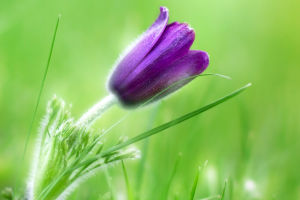Ferns are an ancient and diverse group of plants that have existed on Earth for over 300 million years. As ancestors of seed plants, ferns play a crucial role in the history of plant evolution.
Here is some basic scientific information about ferns.
Definition
Ferns (Pteridophyta) refer to a group of non-seed plants that primarily reproduce through spores. Unlike seed plants, ferns do not have flowers or seeds. Their reproductive cycle consists of two main stages: the gametophyte stage and the sporophyte stage.
Classification
Ferns can be broadly classified into three main groups:
1. True Ferns (Polypodiopsida): This is the most common group of ferns, including familiar types such as the maidenhair fern and staghorn fern. True ferns usually have complex leaf structures called pinnate leaves, with spore sacs growing on the leaves.
2. Clubmosses (Lycopodiopsida): This group was very abundant in ancient times, but modern species are relatively few. Their leaves are scale-like and grow on the ground or hang from trees.
3. Horsetails (Equisetopsida): These plants were very common during the dinosaur era, but only a few species remain today. Their stems are hollow and jointed, with small, scale-like leaves typically surrounding the nodes of the stems.
Structure and Function
The structure of ferns generally includes roots, stems, and leaves. Their leaves, known as 'pinnate leaves,' have a complex branching structure. Ferns have relatively simple root systems but spread widely on the ground, helping the plant absorb water and nutrients.
1. Leaves: The leaves of ferns have strong adaptability and diversity, often producing spores on spore sacs. Spore sacs are the reproductive organs of ferns, and spores are dispersed by wind or water.
2. Stems: Fern stems are usually underground rhizomes that store nutrients and support plant growth.
3. Roots: Fern roots are generally simplified compared to seed plants but are effective in absorbing water and nutrients from the soil.
Reproduction and Lifecycle
Ferns reproduce both asexually and sexually. Asexual reproduction occurs through rhizomes, spores, or fragments of leaves, while sexual reproduction involves the formation and germination of spores.
1. Spores: The sexual reproduction of ferns mainly occurs through spores. Spores are produced within spore sacs, and when mature, they are released. Spores germinate under suitable conditions, forming gametophytes.
2. Gametophyte: The gametophyte is an important stage in the fern lifecycle; it is a small, independent, heart-shaped plant. Gametophytes produce male and female gametes, which combine in water to form a fertilized egg that develops into a new sporophyte.
Ecology and Uses
Ferns play an important role in ecosystems. They can grow in shaded, moist environments, helping to maintain soil moisture and prevent erosion. Many ferns are also a significant component of forest understories, providing habitat for various microorganisms and insects.
Ferns also have applications in human life. They are used for ornamental gardening, traditional medicine, and food. For example, young fern leaves are eaten as vegetables in some regions. Additionally, fern rhizomes can be used to make dyes or traditional medicinal materials.
Conservation
Although there are many species of ferns, some are threatened due to environmental changes, habitat destruction, and overcollection. Therefore, protecting ferns and their habitats is crucial for maintaining ecological balance and biodiversity.
In summary, ferns not only hold an important place in plant evolutionary history but also play an irreplaceable role in modern ecosystems. Understanding and protecting these ancient plants helps us better understand the evolution of nature and maintain the health of Earth's ecosystems.


